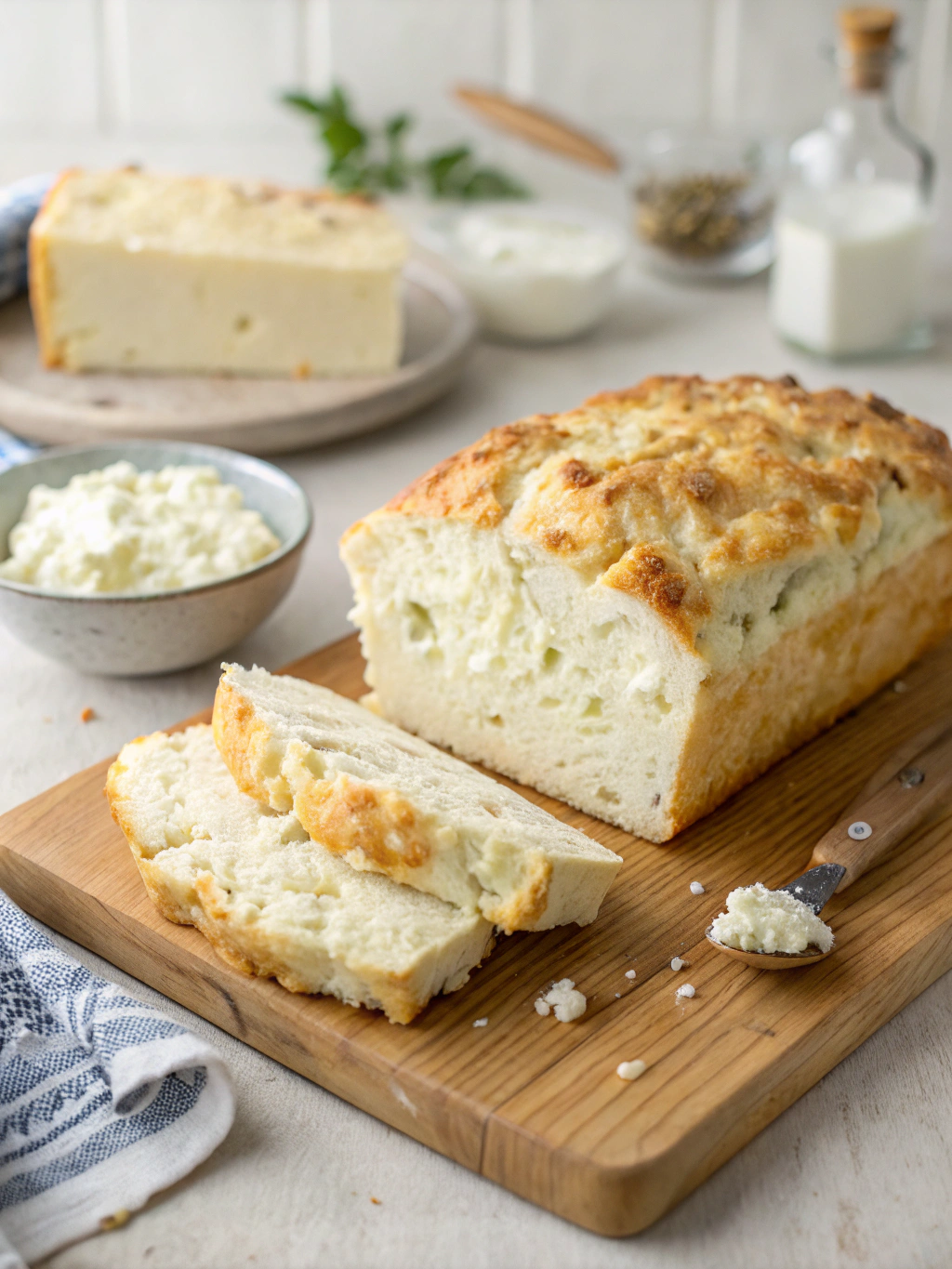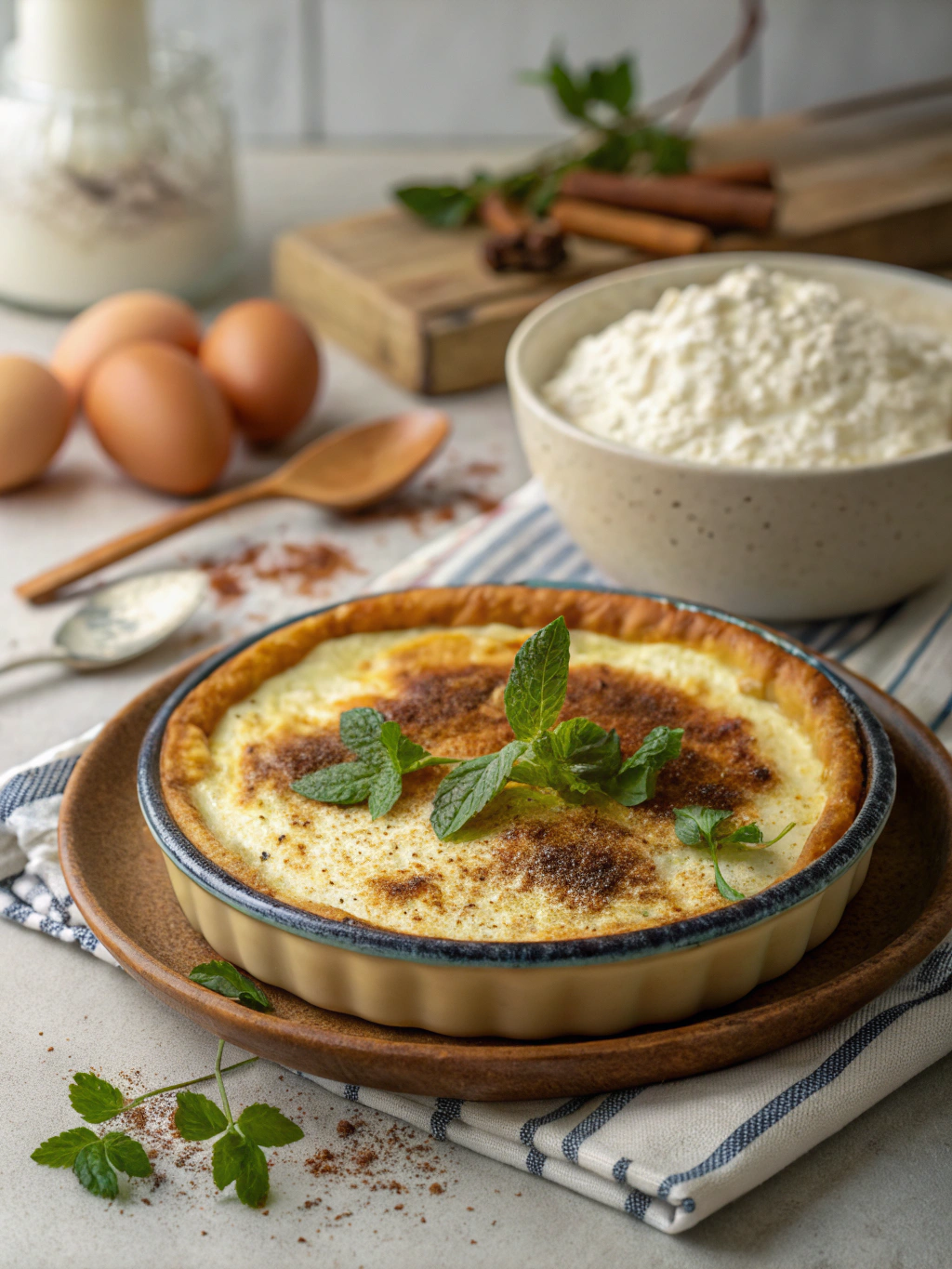Sharing is caring!
Kuku Sabzi Recipe
Why You’ll Love Kuku Sabzi?
Kuku sabzi is a vibrant Persian herb frittata bursting with fresh flavors and aromatic herbs. This dish is perfect for breakfast, brunch, or even a light dinner, offering a nutritious and satisfying meal in just 30 minutes. Packed with greens like parsley, cilantro, and dill, it’s a fantastic way to incorporate more herbs into your diet while enjoying a taste of authentic Persian cuisine. Whether you’re looking for a quick weeknight meal or a dish to impress guests, kuku sabzi delivers on both simplicity and bold flavor. Pair it with a refreshing citrus juice for a complete experience.
Table of Contents
- Ingredients to make kuku sabzi
- Time needed to make kuku sabzi
- Quick Steps to Make Kuku Sabzi
- Is kuku sabzi healthy and nutritious
- Can I make kuku sabzi healthier and still delicious
- How to Serve Kuku Sabzi
- Avoid These Mistakes
- The best way to store leftover kuku sabzi
- Ready to give kuku sabzi a try
- Frequently Asked Questions
Ingredients to make kuku sabzi
- 2 cups fresh parsley, finely chopped
- 1 cup fresh cilantro, finely chopped
- 1 cup fresh dill, finely chopped
- 1/2 cup chives or green onions, finely chopped
- 4 large eggs
- 1/4 cup all-purpose flour
- 1 teaspoon baking powder
- 1/2 teaspoon ground turmeric
- 1/2 teaspoon ground cumin
- 1/4 teaspoon ground cinnamon
- 1/2 teaspoon salt
- 1/4 teaspoon black pepper
- 1/3 cup walnuts, roughly chopped (optional)
- 1/3 cup barberries or dried cranberries (optional)
- 3 tablespoons olive oil or butter for cooking
Time needed to make kuku sabzi
This vibrant Persian herb frittata comes together in just 30 minutes – perfect for busy weeknights or a quick brunch. Here’s the breakdown:
- Prep time: 15 minutes (chopping herbs, whisking eggs)
- Cook time: 12-15 minutes (stovetop to oven)
- Total time: 27-30 minutes
The hands-on time is minimal – most of the work is simply letting the kuku sabzi bake to golden perfection. For meal prep efficiency, you can chop herbs ahead using these herb storage tips from our green juice guide.
Quick Steps to Make Kuku Sabzi
Step 1: Prep Your Herbs
Wash and finely chop all fresh herbs (parsley, cilantro, dill, and scallions). Pat them dry to remove excess moisture, which helps the frittata hold its shape better.
Step 2: Whisk Eggs & Spices
In a large bowl, whisk eggs until frothy. Add turmeric, baking powder, salt, and black pepper. For extra depth, some cooks swear by a pinch of cinnamon or cumin—experiment to taste!
Step 3: Combine Herbs & Eggs
Fold the chopped herbs and toasted walnuts (if using) into the egg mixture. The batter should be thick and vibrant green. Let it rest for 5 minutes to allow flavors to meld.
Step 4: Cook on the Stovetop
Heat olive oil in a nonstick skillet over medium. Pour in the herb-egg mixture, spreading it evenly. Cook for 5–7 minutes until edges set. Cover with a lid to steam the top slightly.
Step 5: Finish Under the Broiler
Transfer the skillet to the oven and broil for 2–3 minutes until the top is golden and the center springs back when touched. Alternatively, flip the kuku sabzi like a pancake for even browning.
Step 6: Slice & Serve
Let it cool slightly, then cut into wedges. Garnish with extra herbs or barberries for a pop of color. Pair with yogurt or a tangy roasted cauliflower salad for balance.
Is kuku sabzi healthy and nutritious ?
Kuku sabzi is packed with nutrients, making it a powerhouse of vitamins and minerals. This Persian herb frittata is loaded with fresh greens like parsley, cilantro, and dill, which provide antioxidants, fiber, and essential vitamins such as A, C, and K. Eggs add high-quality protein and healthy fats, making it a balanced meal.
For those looking to boost their nutrient intake, pairing kuku sabzi with a refreshing carrot-pineapple-orange juice can enhance digestion and immunity. Additionally, incorporating this dish into a diet rich in plant-based meals, like this vegan split pea soup, can further support a well-rounded eating plan.
Studies suggest that herbs like those in kuku sabzi may help reduce inflammation and support heart health. If you’re interested in other anti-inflammatory dishes, try this turmeric salad or explore slow-cooked nutrient-dense meals for variety.
Can I make kuku sabzi healthier and still delicious?
Absolutely! Kuku sabzi is already packed with nutrient-dense herbs, but you can make it even healthier with a few smart swaps. Here are some easy tweaks to boost nutrition without sacrificing flavor:
Egg Alternatives
For a lower-cholesterol version, replace half the eggs with chia or flax eggs. This adds fiber and omega-3s while maintaining the frittata’s structure. You can also try using silken tofu as a vegan alternative.
Healthier Fats
Instead of butter, use heart-healthy olive oil or avocado oil. These oils contain beneficial monounsaturated fats that support cardiovascular health while still giving your kuku sabzi that perfect golden crust.
Boost the Greens
Add extra nutrient power by including more dark leafy greens like spinach or kale. For an anti-inflammatory boost, try mixing in some turmeric or ginger to the herb mixture.
Whole Grain Option
If using flour as a binder, opt for whole wheat or almond flour instead of white flour. This increases fiber content and adds a nutty flavor that complements the herbs beautifully.
How to Serve Kuku Sabzi?
Kuku sabzi shines as a versatile dish that pairs beautifully with various sides. For a light lunch, serve it with a refreshing roasted cauliflower salad or a tangy yogurt dip. If you’re aiming for a heartier meal, try it alongside warm flatbreads like lavash or pita.
For breakfast or brunch, pair kuku sabzi with a vibrant carrot-pineapple-orange juice for a nutrient-packed start. The sweetness of the juice balances the earthy herbs perfectly. If you prefer something savory, serve it with a dollop of labneh and a sprinkle of sumac.
Looking for international inspiration? The Stay at Home Chef suggests pairing herb-heavy dishes with simple starches to let the flavors shine. For a Persian-inspired feast, consider serving kuku sabzi with saffron rice and a side of spicy split pea soup for contrasting textures.
Presentation matters too! Cut kuku sabzi into elegant wedges or diamond shapes for special occasions. Garnish with edible flowers, pomegranate seeds, or fresh herb sprigs for a pop of color that’ll impress your guests.
Avoid These Mistakes
Making kuku sabzi is simple, but a few common errors can affect its texture and flavor. Here’s what to watch out for:
Overcrowding the Pan
Using too many herbs can make your kuku sabzi dense instead of fluffy. Stick to the recommended herb-to-egg ratio for the best results. If you love herb-packed dishes, try our anti-inflammatory turmeric salad for a lighter alternative.
Underseasoning
Fresh herbs need bold seasoning. Don’t skimp on salt, pepper, or spices like turmeric. For more seasoning tips, check out this guide on balancing flavors in slow-cooked dishes.
Overcooking
Leaving kuku sabzi on the heat too long dries it out. Cook just until set, similar to a frittata. Need timing help? Our vegetarian Italian soup guide includes perfect simmering techniques.
Skipping the Resting Time
Letting it cool slightly before slicing ensures clean cuts. For more kitchen hacks, explore pro tips from Julie’s vegan recipes.
The best way to store leftover kuku sabzi
To keep your kuku sabzi fresh, let it cool completely before storing. Wrap individual slices tightly in plastic wrap or aluminum foil, or place them in an airtight container. For short-term storage, refrigerate for up to 3 days. If you want to enjoy it later, freeze portions for up to 2 months—just thaw overnight in the fridge before reheating.
For the best texture, reheat slices in a skillet over low heat with a splash of water or oil to prevent drying out. Alternatively, warm them in a 300°F oven for 10 minutes. Avoid microwaving, as it can make the herbs soggy. Pair reheated kuku sabzi with a fresh side like this roasted cauliflower salad or a light turmeric salad for balance.
For more storage hacks, check out these herb-friendly tips or freezer meal prep ideas to extend the life of your dishes.
Ready to give kuku sabzi a try?
This vibrant Persian herb frittata is easier than you think and packs incredible flavor in every bite. Whether you’re looking for a protein-packed breakfast, a light lunch, or a colorful side dish, kuku sabzi delivers on all fronts. The combination of fresh herbs, eggs, and warming spices creates a dish that’s both nourishing and satisfying.
If you loved this recipe, explore other herb-packed dishes like our roasted cauliflower salad or turmeric anti-inflammatory salad. For more international flavors, try our hearty Italian vegetable soup or refreshing kiwi agua fresca to complete your meal.
Don’t forget to share your kuku sabzi creations with us – we’d love to see your herb-filled masterpieces! With just 30 minutes from start to finish, this recipe proves that healthy eating can be delicious, quick, and full of flavor.
Frequently Asked Questions
What is kuku sabzi?
Kuku sabzi is a Persian herb frittata packed with fresh greens, herbs, and eggs. It’s a flavorful, nutrient-dense dish often served during Nowruz (Persian New Year) but enjoyed year-round.
Can I make kuku sabzi ahead of time?
Yes! Kuku sabzi tastes great at room temperature or slightly reheated. Store it properly in the fridge for up to 3 days, making it perfect for meal prep.
What herbs work best in kuku sabzi?
Traditional recipes use parsley, cilantro, dill, and chives. You can adjust quantities based on preference, but parsley and cilantro are essential for authentic flavor.
Why is my kuku sabzi soggy?
Sogginess usually comes from excess moisture in the herbs. Make sure to thoroughly dry your greens after washing, and consider sautéing them briefly to remove extra water.
Can I make kuku sabzi vegan?
While eggs are key to traditional kuku sabzi, you can experiment with chickpea flour or tofu as egg substitutes. The texture will differ but can still be delicious.
How do I know when kuku sabzi is fully cooked?
The edges should be golden brown, and the center should be set. Insert a toothpick – if it comes out clean, your kuku sabzi is ready.












